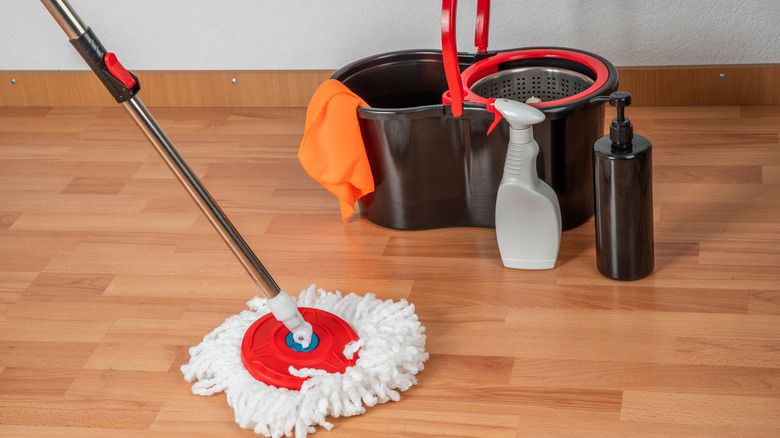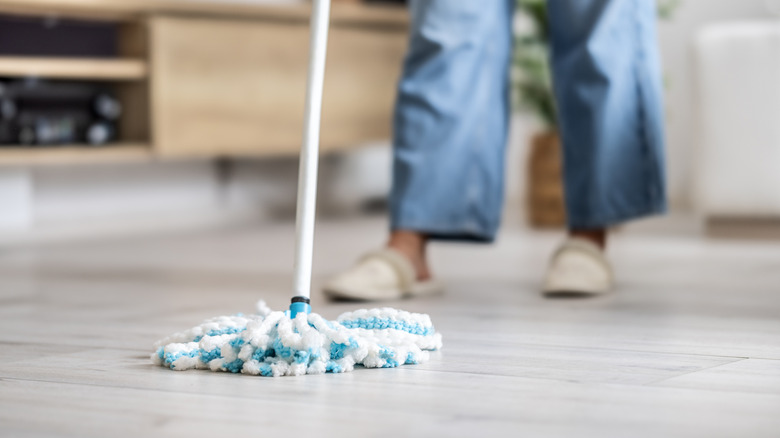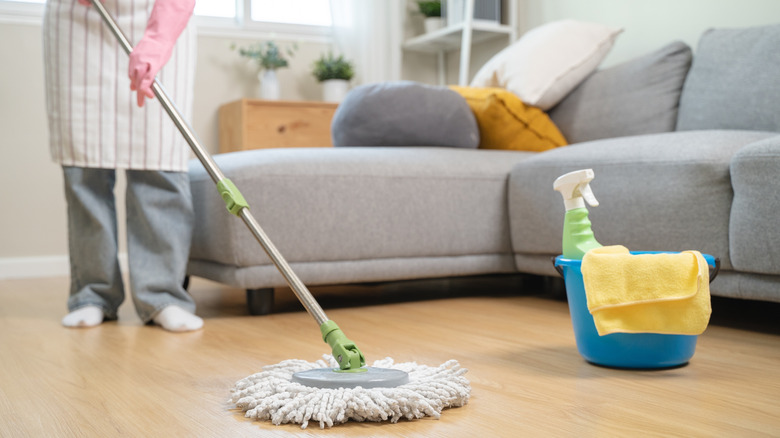The Only DIY Vinegar Solution To Clean Your Laminate Floors
Do you hesitate when thinking about using harsh, store-bought cleaners on your laminate floors? You're not alone. The right solution can leave your floors sparkling and streak-free without the need for a laundry list of chemicals. This DIY cleaner for laminate floors is a simple concoction you can make at home with items you already have on hand. Into a mop bucket with 2 cups of warm water, mix in ¼ cup of rubbing alcohol, ½ cup of distilled white vinegar, and two drops of liquid dish soap. This powerful yet gentle formula combines several household staples to tackle everything from dirt and grime to smudges and fingerprints.
The gentle acidity of the vinegar works to cut through surface dirt, while the rubbing alcohol quickly evaporates to prevent streaks and residue, which are common issues with laminate. The tiny amount of dish soap helps to lift stubborn greasy spots without leaving a film. By using this mixture, you can get a professional-quality clean using products that you likely already have in your home. The result is a spotless floor and the satisfaction of not using a store-bought cleaner.
How each ingredient works for a perfect finish
While the combination of ingredients is simple, their individual functions are what make this solution so powerful. Rubbing alcohol is the secret to streak-free laminate floors. As a potent solvent, it quickly dissolves greasy marks, sticky messes, and other compounds that water alone can't remove. More importantly, it evaporates at an extremely fast rate. This rapid evaporation is what stops water from sitting on the surface, which is the main culprit behind streaks and cloudy film on laminate floors.
The distilled white vinegar plays a different yet equally important role. Its mild acidity is effective at breaking down mineral deposits from hard water and lifting dirt. This sanitizing action helps to clean and refresh the floor without causing damage to the protective layer of the laminate itself. It should be noted that using too much vinegar or the wrong kind of vinegar to clean laminate floors can dull the shine and damage the floor's finish over time. This is why acheiving the right vinegar to water ratio is necessary when using it for cleaning purposes.
The liquid dish soap is not there for suds, but rather to help the other ingredients work better. Dish soap is a surfactant, meaning it lowers the surface tension of the water, allowing the cleaning solution to spread more evenly and penetrate dirt and grime more effectively. This creates a balanced, multi-purpose cleaner that gets the job done without leaving anything behind.
Best practices for a flawless finish
Creating the perfect cleaning mixture is only half the battle; how you apply it matters just as much. The first step is always preparation. Before you mop, use a soft-bristle broom or a vacuum with a soft-brush attachment to get rid of any loose dirt, dust, and debris. This will prevent the dirt from getting pushed around by a wet mop and potentially scratching the floor's surface.
When you're ready to mop, an important thing to keep in mind is to use a damp mop, not one that's dripping wet. Excess water can damage laminate flooring by causing the edges and seams to swell or warp. A microfiber mop is one of the best mops to use on laminate floors since they are highly absorbent and easy to wring out to the ideal dampness. After mopping a section of the floor, it's a good idea to follow up with a microfiber cloth or dry mop to make sure no moisture is left behind. This extra pass is a simple trick that helps to boost the streak-free results. Using the right cleaning solution and these tips will help keep your laminate floors looking clean and new for a long time.


